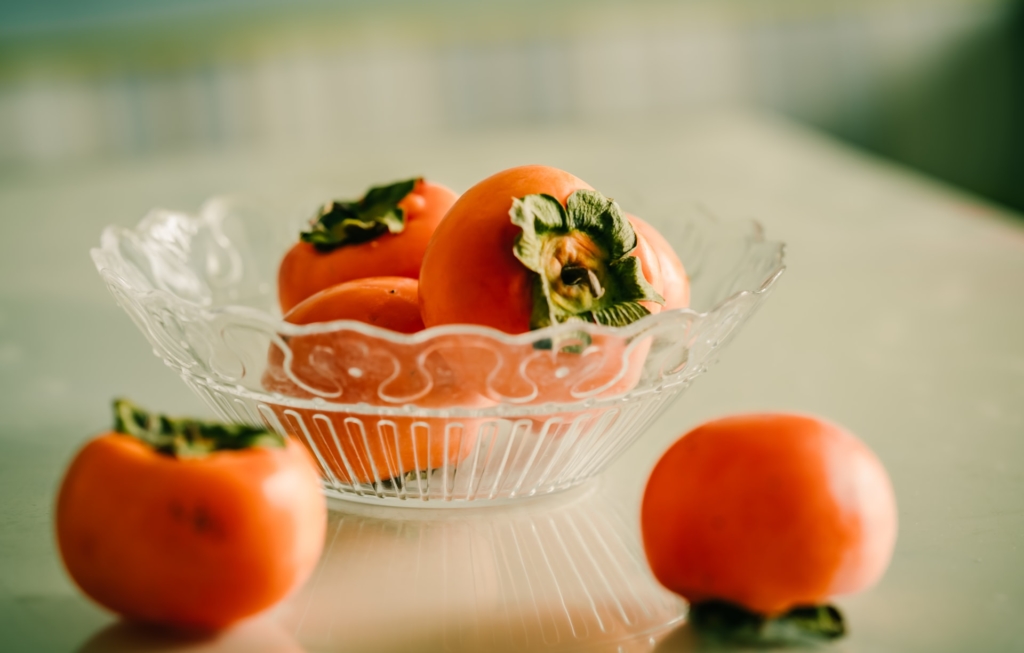Lush, enticing persimmon fruits can be confusing; the two most common varieties taste best when eaten completely differently. Don’t worry, though, we’ve got your back. Read below to learn how and when to eat each variety.
What are Persimmons?
Persimmons are an important and extensively grown fruit in China, Korea, and Japan, with varieties also found in the United States and Europe. Several hundred varieties of persimmons have been developed, but the two most common types to know are hachiya (astringent) and fuyu (non-astringent). Astringent varieties taste rich, sweet, and spicy, but are mouth-puckeringly tart unless fully ripe, while non-astringent varieties can be eaten while firm and crisp.
Hachiya Persimmons

Hachiya persimmons are orange to dark red and acorn-shaped, pointy at the bottom. When unripe, they are unpalatably tart, with a fuzzy interior texture due to a high tannin content. Their astringency mellows as they ripen, and fully ripe hachiya persimmons are sweet with a jelly-like “akin to a not-quite-full water balloon”, according to Margaret Badore. What do they taste like? Imagine a honeyed tropical fruit with hints of rich tomato and spicy cinnamon.
Fuyu Persimmons

Squat and vaguely doughnut-shaped, fuyus are smaller than hachiyas and yellow to orange in color. Non-astringent Fuyu persimmons can be eaten while barely ripe, still firm and crisp. They have a delicate sweetness that becomes deeper and more honey-like as they ripen, and a pleasantly silky mouthfeel. Fuyus can usually be sliced when ripe because their texture is firmer than the jelly-like hachiyas. Their skin is tougher and thicker than apple skin, so some fuyu fans choose to peel them before eating.
Persimmon Nutrition
Both of these varieties are bursting with beta carotene, dietary fiber, and minerals like magnesium, calcium and iron. They contain vitamins A and C, plus compounds thought to protect against heart disease.
Eating Persimmons
These fruits can be eaten raw, though again, you need to know the type you’re working with. While fuyus are often firm enough to chomp down on, ripe hachiyas are too squishy to bite into, so better to cut them open and eat with a spoon. Sliced fuyu persimmons make a fantastic addition to salads, while quaggy hachiyas cook down nicely into jams and compotes. Either type works well in desserts, like baked into pies and cakes, or in our recipe for Persimmon Pudding.
Where to find Persimmons
In season between September and December, persimmons are likely to be at farmers markets or specialty grocers between late fall and early winter. It is sometimes called the sharon fruit.



